I'm currently trying to understand per pixel collision detection.
This is the code I don't understand:
static bool IntersectPixels(Rectangle rectangleA, Color[] dataA,
Rectangle rectangleB, Color[] dataB)
{
// Find the bounds of the rectangle intersection
int top = Math.Max(rectangleA.Top, rectangleB.Top);
int bottom = Math.Min(rectangleA.Bottom, rectangleB.Bottom);
int left = Math.Max(rectangleA.Left, rectangleB.Left);
int right = Math.Min(rectangleA.Right, rectangleB.Right);
// Check every point within the intersection bounds
for (int y = top; y < bottom; y++)
{
for (int x = left; x < right; x++)
{
// Get the color of both pixels at this point
Color colorA = dataA[(x - rectangleA.Left) +
(y - rectangleA.Top) * rectangleA.Width];
Color colorB = dataB[(x - rectangleB.Left) +
(y - rectangleB.Top) * rectangleB.Width];
// If both pixels are not completely transparent,
if (colorA.A != 0 && colorB.A != 0)
{
// then an intersection has been found
return true;
}
}
}
// No intersection found
return false;
}
I really haven't understood the all loop. I'll be glad for some explanation how it works.
